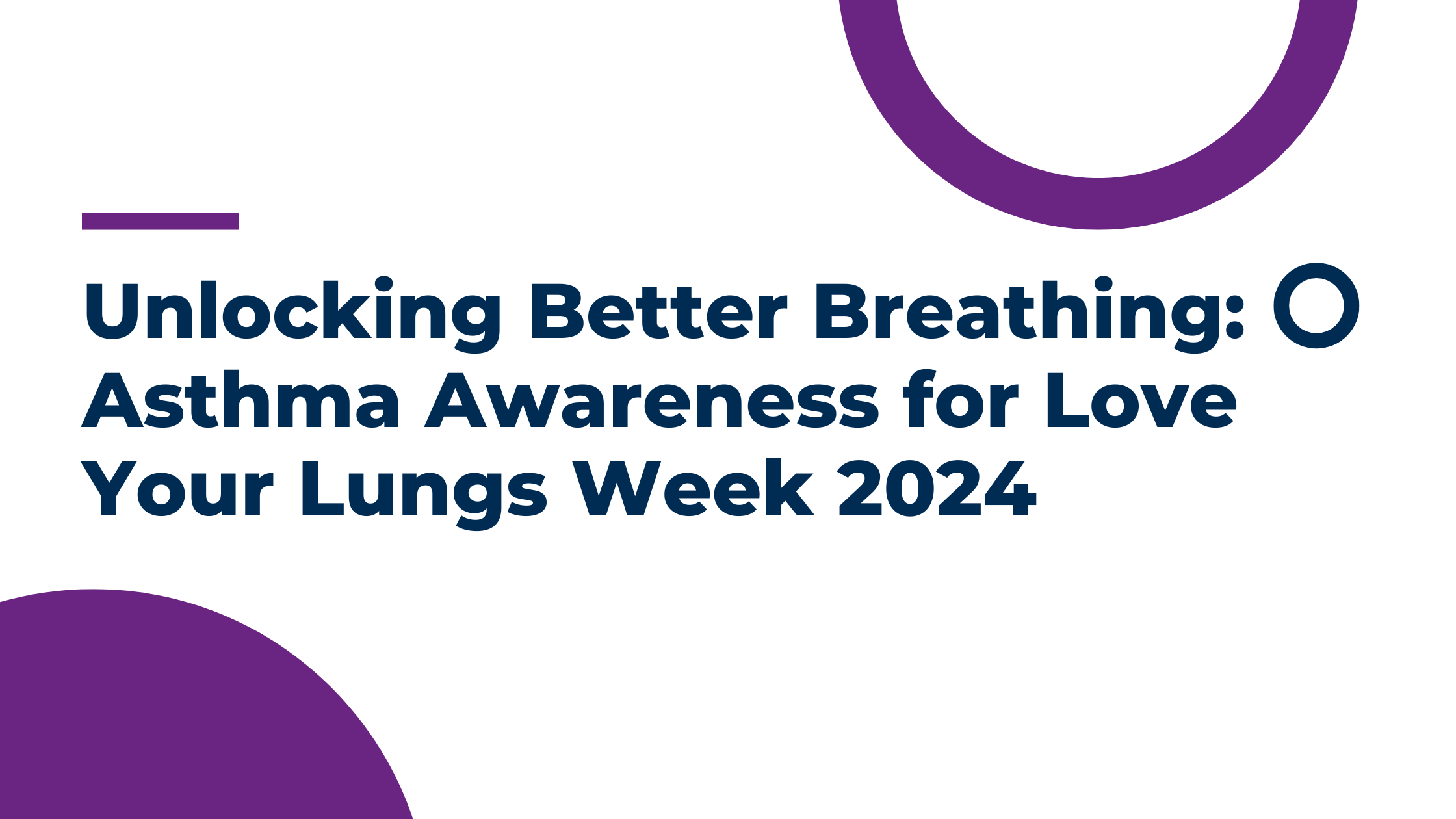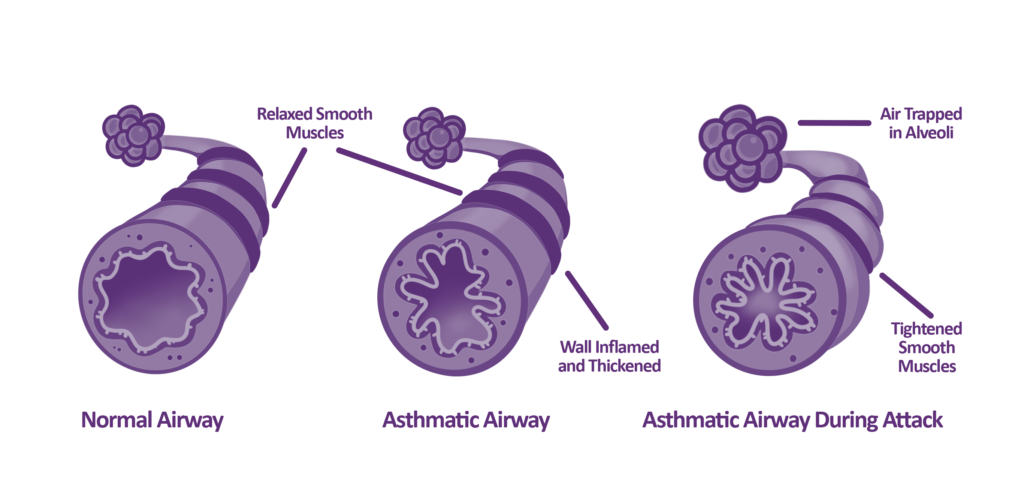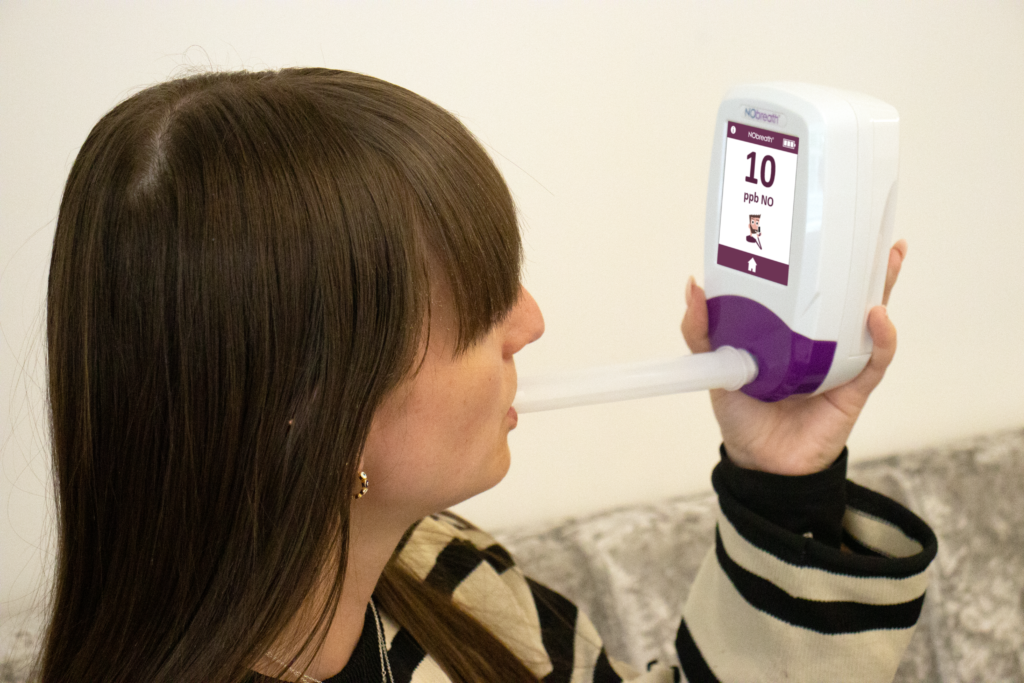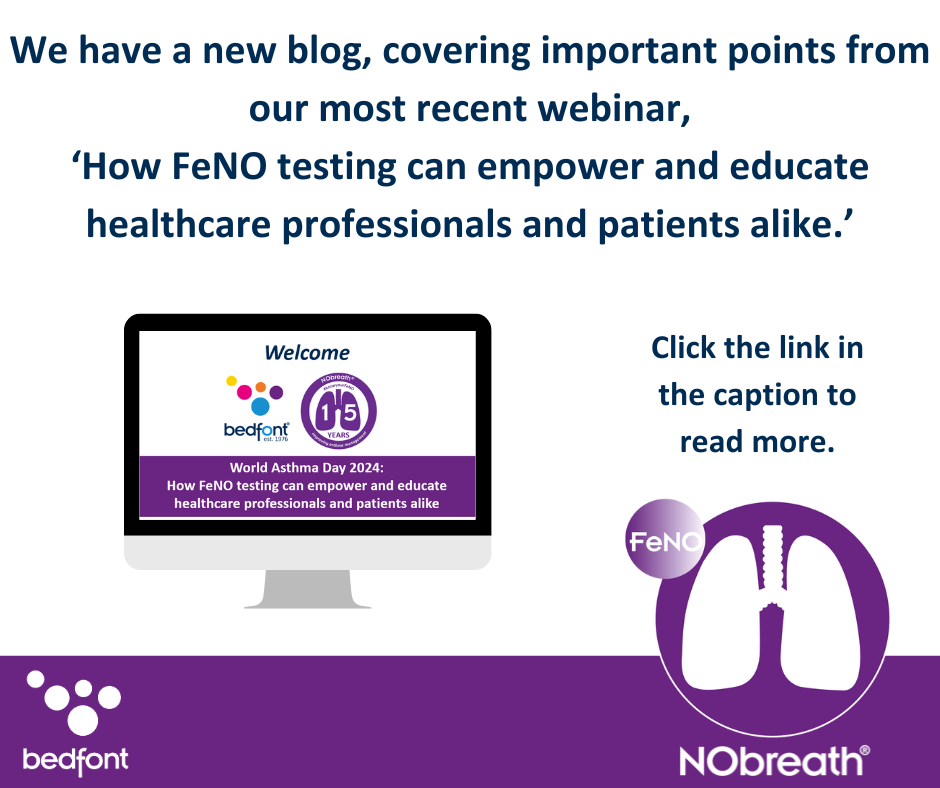
Love Your Lungs Week is a national awareness event which occurs annually in June, taking place from 21st June to 27th June 2024. Initiated by the British Lung Foundation, now known as Asthma and Lung UK, the event focuses on enhancing lung health and looks to raise awareness of a variety of respiratory conditions that affect lung health. One of these conditions is asthma, which is a chronic condition where the airways become inflamed and narrowed, making breathing difficult.
Symptoms of asthma include:
- Coughing
- Wheezing
- Chest tightness
- Shortness of breath

What causes asthma?
It is thought that asthma is caused by a combination of genetic and environmental factors; when exposed to various irritants and substances, it can trigger asthma symptoms. There are 2 types of asthma; allergy-induced asthma and non-allergy induced asthma. Both types can have different triggers and these can vary from person to person.
Allergy-induced asthma is the most common form and can be triggered by inhaling allergens. This
can lead to an immune response in the airways which causes the symptoms of asthma. Common
allergens include:
- Pollen: From trees, grass and weeds.
- Dust Mites: Tiny creatures that thrive in household dust.
- Pet Fur: Shed by cats, dogs and other furry pets.
- Mould: Fungai that can grow indoors or outdoors in moist environments.
If these allergens are inhaled by someone with allergy-induced asthma, an allergic reaction can take place that causes the airways to swell, narrow and produce excess mucus.
Non-allergy induced asthma does not depend on an allergic reaction and is often triggered by factors not relating to allergies.

These can include:
- Respiratory Infections: Such as the common cold or influenza.
- Exercise: Especially in cold or dry air.
- Stress and Emotions: Intense emotions can lead to hyperventilation and tightness in the chest.
- Airborne Irritants: Such as smoke, chemical fumes, strong odours, or pollutants.
These triggers can cause the airways to swell and narrow but do not involve an allergic response. Instead, they may involve different inflammatory responses or hypersensitivity of the airways.
What impact does asthma have?
Asthma can have a significant impact on people’s lives, affecting their physical health, mental well- being and quality of life. The condition imposes lifestyle limitations, with sufferers often avoiding activities that might trigger symptoms, along with the economic burden from continuous medical care and loss of productivity due to absences from work or school.
Unfortunately, asthma-related emergency admissions remain high at over 35,000 in both adults and
children in the UK1, and with 1,261 people sadly passing away in 20201, it is clear more needs to be
done to avoid these numbers increasing.
What about FeNO testing?
Fractional Exhaled Nitric Oxide (FeNO) is found in exhaled breath and can aid in the diagnosis and treatment of asthma. FeNO is naturally produced in the lungs through a complex biological process. The measurement of FeNO helps assess the level of inflammation in the lungs, aiding in the diagnosis and treatment of asthma. Using a FeNO device like the NObreath® is a quick and easy, non-invasive way to read a person’s FeNO level. FeNO testing is especially useful for managing asthma in patients who are known to have allergic triggers, as it specifically measures the type of inflammation most commonly associated with allergic asthma.

How does FeNO fit into asthma management?
- Diagnosis: FeNO testing can help in diagnosing asthma in cases where typical diagnostic tests (like spirometry) might not be conclusive. Elevated FeNO levels can suggest eosinophilic inflammation, which is a common underlying cause in many asthma patients.
- Monitoring: For ongoing asthma management, FeNO levels can provide insight into how well inflammation is being controlled through medication, particularly inhaled corticosteroids.
- Monitoring FeNO can help in adjusting medications more precisely to reduce inflammation.
- Predicting Exacerbations: High FeNO levels can indicate poorly controlled asthma and predict potential exacerbations. This can be particularly useful in managing patients who have periodic flare-ups, allowing for preventive adjustments in treatment.
- Assessing Treatment Response: Regular FeNO testing can assess the effectiveness of current asthma treatment regimens. If FeNO levels remain high despite treatment, it might suggest the need for alternative therapies or more aggressive management.
With World Asthma Day just a little over a month ago now, this years theme “Asthma Education Empowers” aimed to highlight the importance of education in asthma diagnosis and treatment. It is clear that the innovative approaches to its management, including FeNO testing, have never been more essential.
Bedfont® Scientific Limited, are world leaders in breath analysis, with over 47 years of expertise and knowledge in designing and manufacturing breath analysis devices. They are committed to improving patient safety through innovating breath analysis devices, such as the NObreath®. The device is a portable handheld FeNO device, used by healthcare professionals to aid in the diagnosis and treatment of asthma.
Bedfont® hosted an insightful webinar which looked in depth at how FeNO testing can empower and educate healthcare professionals alike. To read the Bedfont® blog article on this subject, and to watch the webinar, please click here.

1. Public health profiles. Office for Health Improvement & Disparities. [cited on 7/5/24] Available from
https://fingertips.phe.org.uk/search/asthma
